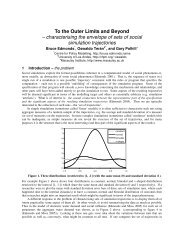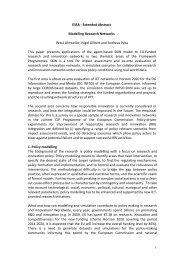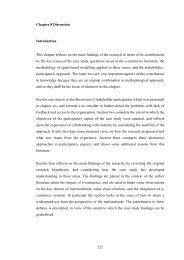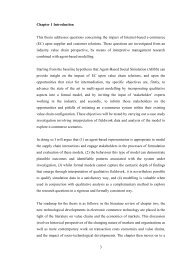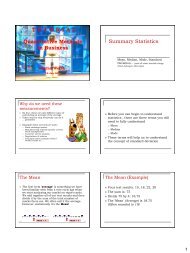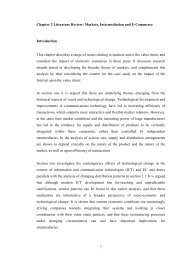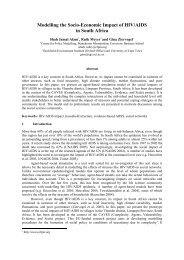1 Agent-Based Modelling Incorporating Qualitative and Quantitative ...
1 Agent-Based Modelling Incorporating Qualitative and Quantitative ...
1 Agent-Based Modelling Incorporating Qualitative and Quantitative ...
You also want an ePaper? Increase the reach of your titles
YUMPU automatically turns print PDFs into web optimized ePapers that Google loves.
existence of the mall from the initial cycle, <strong>and</strong> have some beliefs about its qualities (which may be<br />
misperceptions). However, as more evidence is gathered 4 , initial perceptions will tend to play a<br />
lesser role. The following algorithm defines how endorsements are used to determine beliefs:<br />
If there are either<br />
One observation that negates the hypothesis or<br />
Three statements that negate the hypothesis<br />
Then the belief is asserted as the negation of the qualification.<br />
Otherwise, if there are either<br />
Three observations that support the hypothesis or<br />
Three statements that support the hypothesis<br />
Then the belief is asserted as the confirmation of the qualification.<br />
(If the agent has fewer than three statements or observations as evidence to support the hypothesis, then it is not<br />
regarded as adequate to believe or disbelieve it.)<br />
Otherwise,<br />
If there is an initial perception that supports the hypothesis,<br />
Then the belief is asserted as ‘True’<br />
<strong>Agent</strong>s are endowed either with a manual/card-based internal, or IT/computer-based system. Two<br />
IOS also exist for placing orders - FAX/telephone or EDI. They can subsequently adopt the Internet<br />
mall system for ordering (direct customers) or for collecting information (intermediated customers).<br />
Each trading cycle, a user of the Internet-EC system will experience two aspects of the system <strong>and</strong><br />
the simulation will generate two new observation endorsements. These will be positive or negative<br />
experiences depending on the outcome of a probabilistic trial, which is governed by a system<br />
performance parameter. We model system performance failures by varying these parameters over<br />
time, allowing us to measure the effect of such problems on the number of users <strong>and</strong> their attitudes.<br />
4 We model a form of agent memory decay, where agents retain only the three most recent of each type of endorsements<br />
relating to each hypothesis.<br />
21




